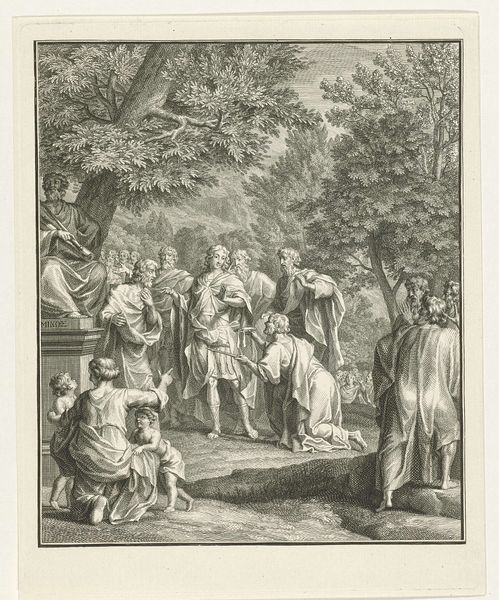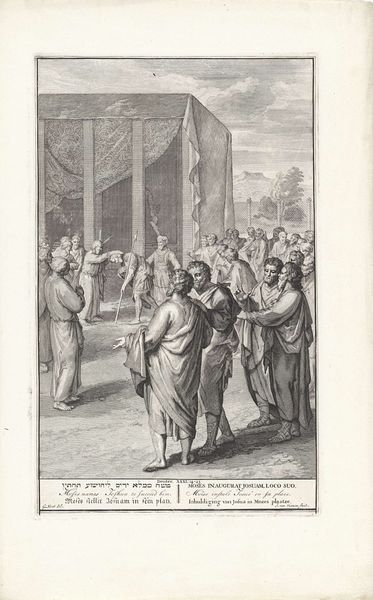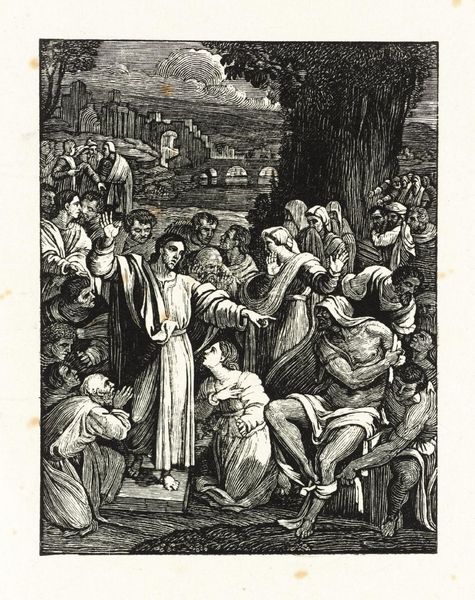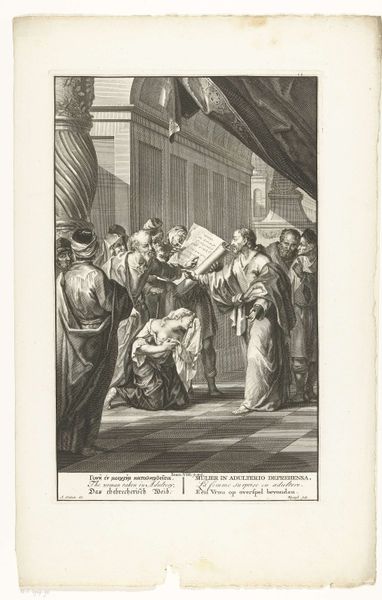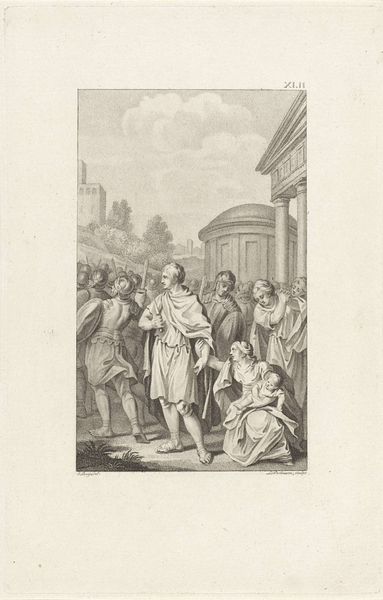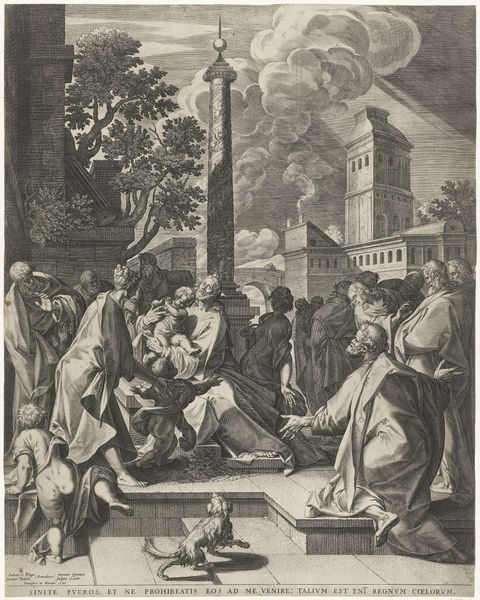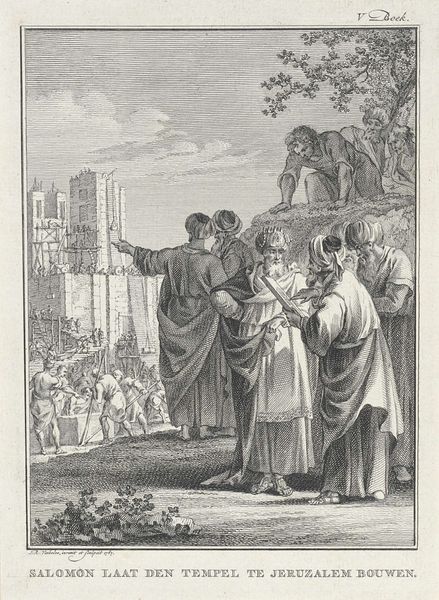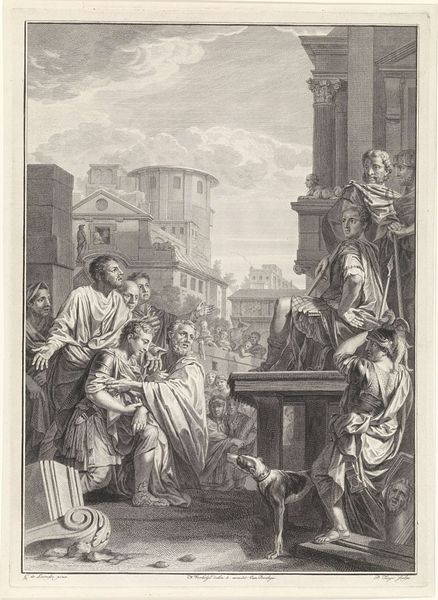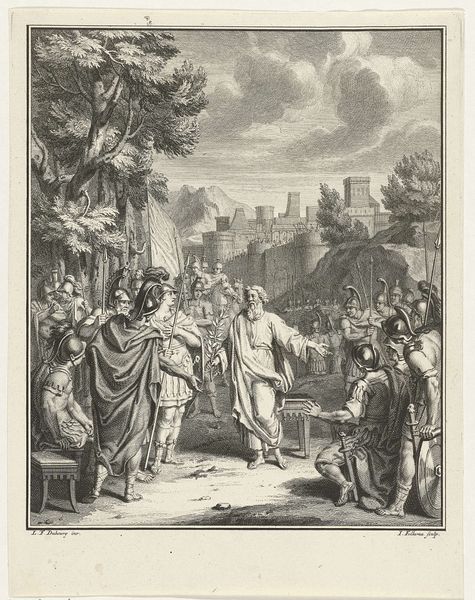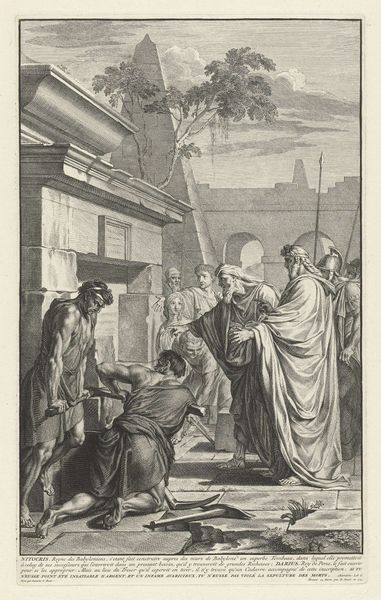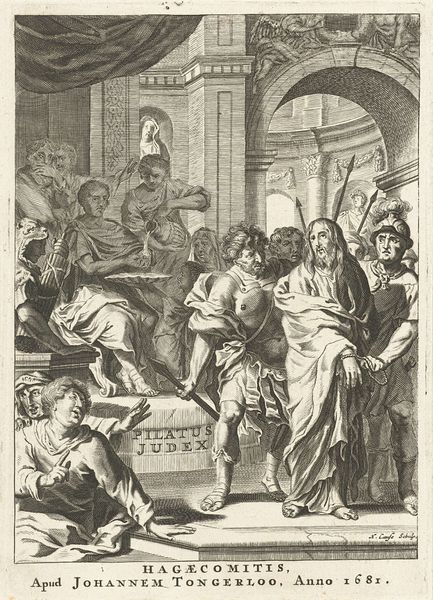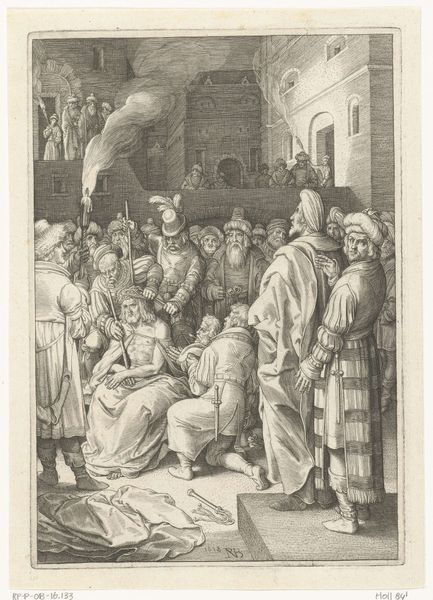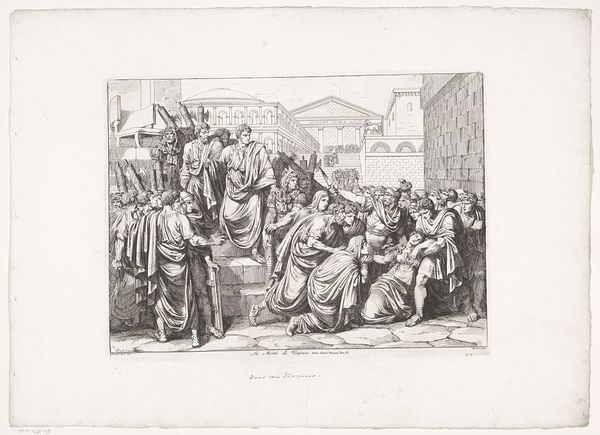
print, engraving
#
narrative-art
#
baroque
# print
#
old engraving style
#
traditional media
#
figuration
#
line
#
genre-painting
#
history-painting
#
engraving
Dimensions: height 357 mm, width 220 mm
Copyright: Rijks Museum: Open Domain
Curator: Look at this incredibly detailed engraving by Andries van Buysen, dating back to the early 1700s, titled "Jozef geeft geschenken aan zijn broers," or "Joseph giving gifts to his brothers." Editor: The first thing that strikes me is the sheer volume of lines. It’s overwhelmingly busy, but in a fascinating way. It’s as if every surface is alive with texture. Curator: Absolutely. What you're seeing there speaks to the highly skilled labor and material processes inherent in engraving during the Baroque period. Buysen likely operated within a complex workshop, potentially involving apprentices. Consider the societal structures that enabled such specialized craft production. Editor: And those tightly packed figures—almost squeezed together. The composition is dense, focused on the exchange happening in the center but it’s chaotic at the edges. It really draws your eye to the moment of giving and receiving, that central transactional aspect of it all. Curator: Right, the act of gift-giving itself as a transaction. The act of giving speaks to themes of power and reconciliation but is mediated through material goods. You see that carried throughout the engraving in the richly detailed clothing of Joseph and the goods being brought to his brothers. Editor: Indeed. Even the dog looks as though its participating in the social dynamics. I am stuck by the symbolic architecture in the background too. That carefully constructed facade, set against the implied prosperity represented by horses, carriages, even trees behind, seem to suggest a grand backdrop of wealth to the gifting scene. The columns are so dominant here, adding visual stability. Curator: Indeed, all elements combined speaks of status and resources—and a subtle tension. I’m struck by the narrative possibilities within that distribution of resources. Editor: Looking at it through a formalist lens, I appreciate how Van Buysen directs our eye through strategic use of light and shadow—mostly using the latter, as there are more shadows present in this black and white medium. Curator: And now, reflecting upon what each of us has noted I think this print prompts us to consider our interpretation and interactions of these objects—and how those very factors mediate meaning and artistic practices within culture and economic exchanges. Editor: For me, diving into its aesthetic organization illuminates the image. Analyzing how its forms combine to convey specific messages really enrich my appreciation.
Comments
No comments
Be the first to comment and join the conversation on the ultimate creative platform.
